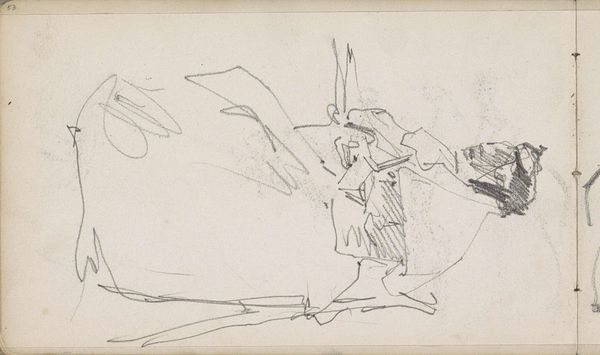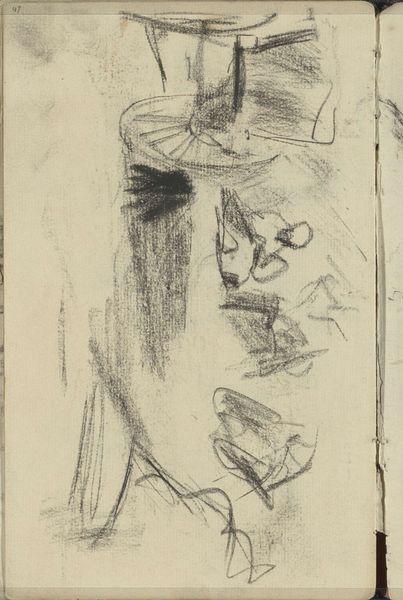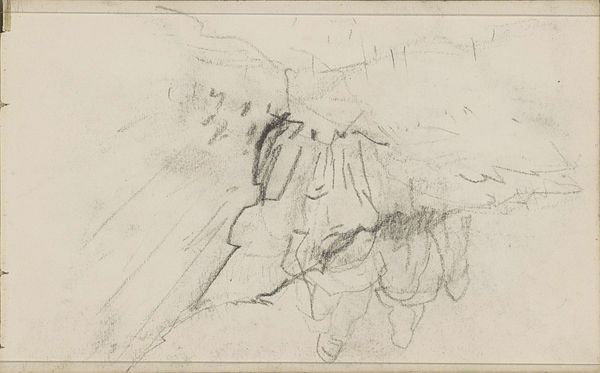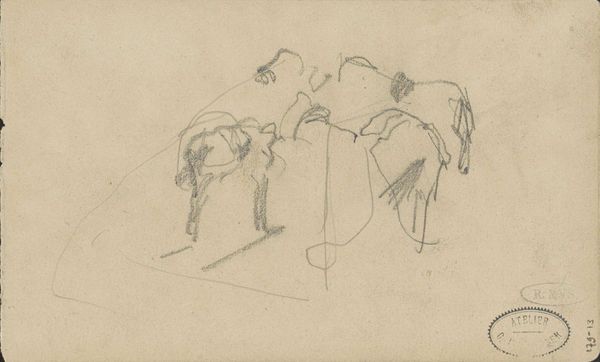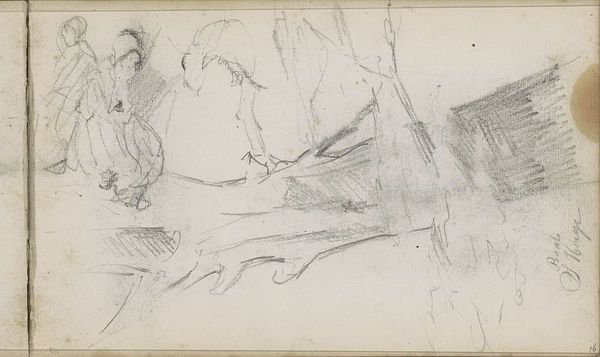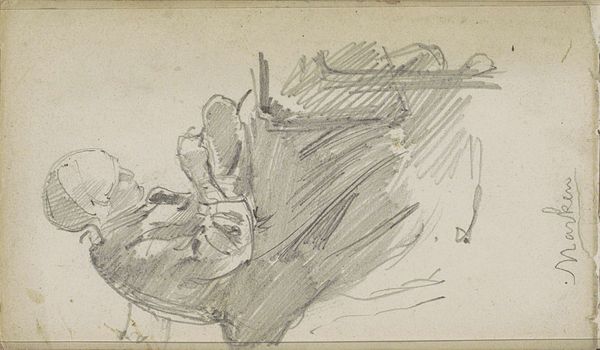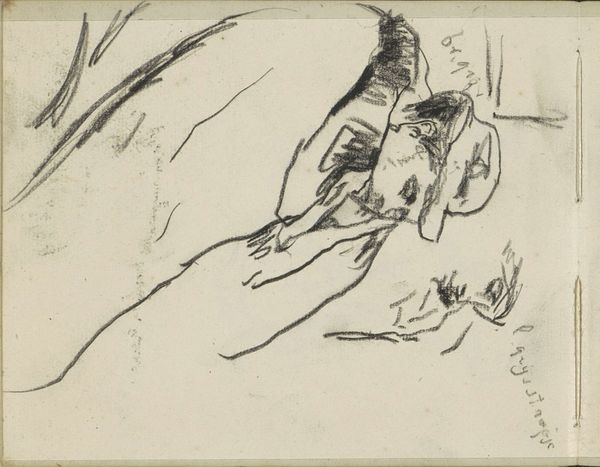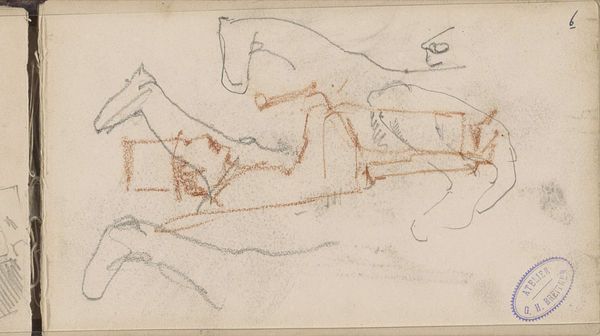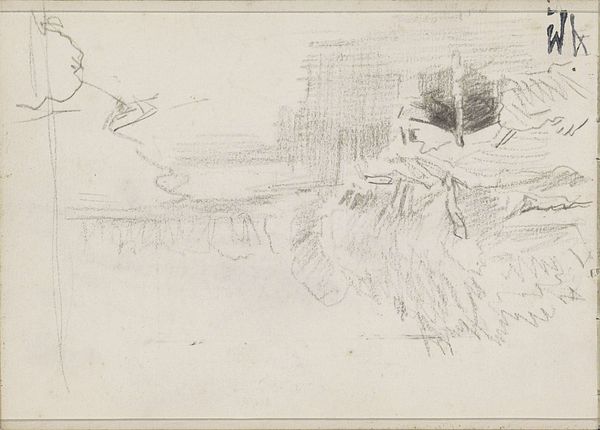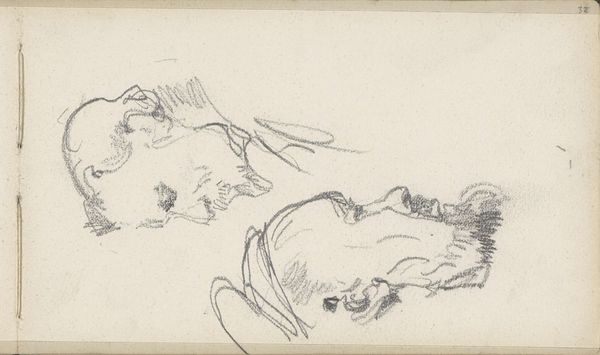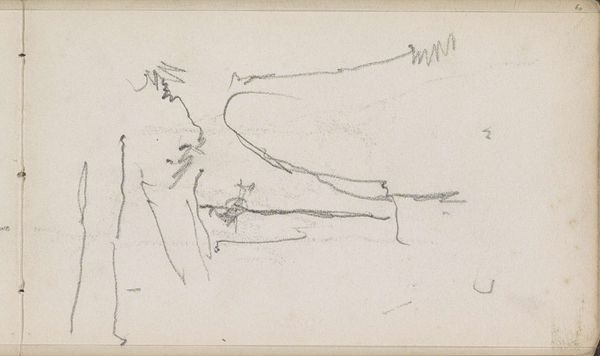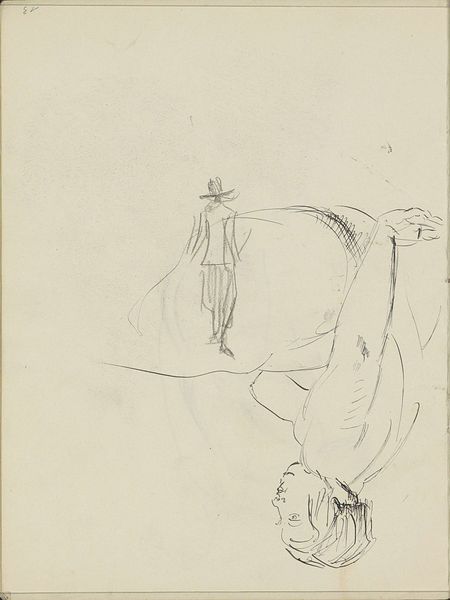
drawing, pencil
#
portrait
#
drawing
#
impressionism
#
pencil sketch
#
landscape
#
figuration
#
pencil
#
sketchbook drawing
Copyright: Rijks Museum: Open Domain
Curator: Looking at this pencil drawing titled "Figuur in een landschap, mogelijk langs een pad" or "Figure in a Landscape, possibly along a Path", created between 1881 and 1883 by George Hendrik Breitner and held at the Rijksmuseum, I'm immediately struck by its simplicity and understated emotional impact. Editor: It definitely possesses a melancholic air, doesn’t it? The figure is so lightly rendered, almost ephemeral, against what seems to be a rather desolate backdrop. Curator: Exactly. The fleeting, sketch-like quality enhances this sense of transience. Breitner captures a moment, almost a ghost, rather than a concrete scene. This rapid capture of observed life connects deeply to Impressionist principles. What symbols or narratives do you read from the sketch’s elements? Editor: Well, the path—if indeed it is one—seems to disappear. Perhaps reflecting how society and progress often leave the most vulnerable figures behind, isolated in a harsh landscape. The roughness of the sketch evokes themes of social realism in representing human figures in natural landscapes. This challenges ideas around portraiture from this period, don’t you think? Curator: Certainly, his raw depiction rejects idealization, aligning with broader currents examining humanity outside the conventional power structures. Furthermore, landscapes hold meaning as settings and cultural metaphors in many cultural memory stores; a motif like an abandoned path holds strong evocative force for loss. Editor: Right! And given Breitner’s engagement with representing ordinary urban life, this landscape, however undefined, moves past bucolic ideals to portray the psychological impact of social neglect and inequality of living standards. The absence of detail perhaps highlights the subject’s struggle against being seen and acknowledged. Curator: Agreed, it invites an intersectional exploration of both the outer physical conditions and an individual's inner state. We see the power dynamics manifested in everyday existence, but we must remain wary to not impose a modern interpretation upon his original goal in production. Editor: Very true, our challenge is to appreciate the raw emotions evoked while holding respect for the era in which Breitner acted and saw with his eyes, both unromantic, urbanizing times, for the better, and also for worse. Curator: A beautiful example of capturing so much through an image while also understanding historical context with all of its psychological effects through memory and continuous narratives. Editor: Precisely. Thank you.
Comments
No comments
Be the first to comment and join the conversation on the ultimate creative platform.
